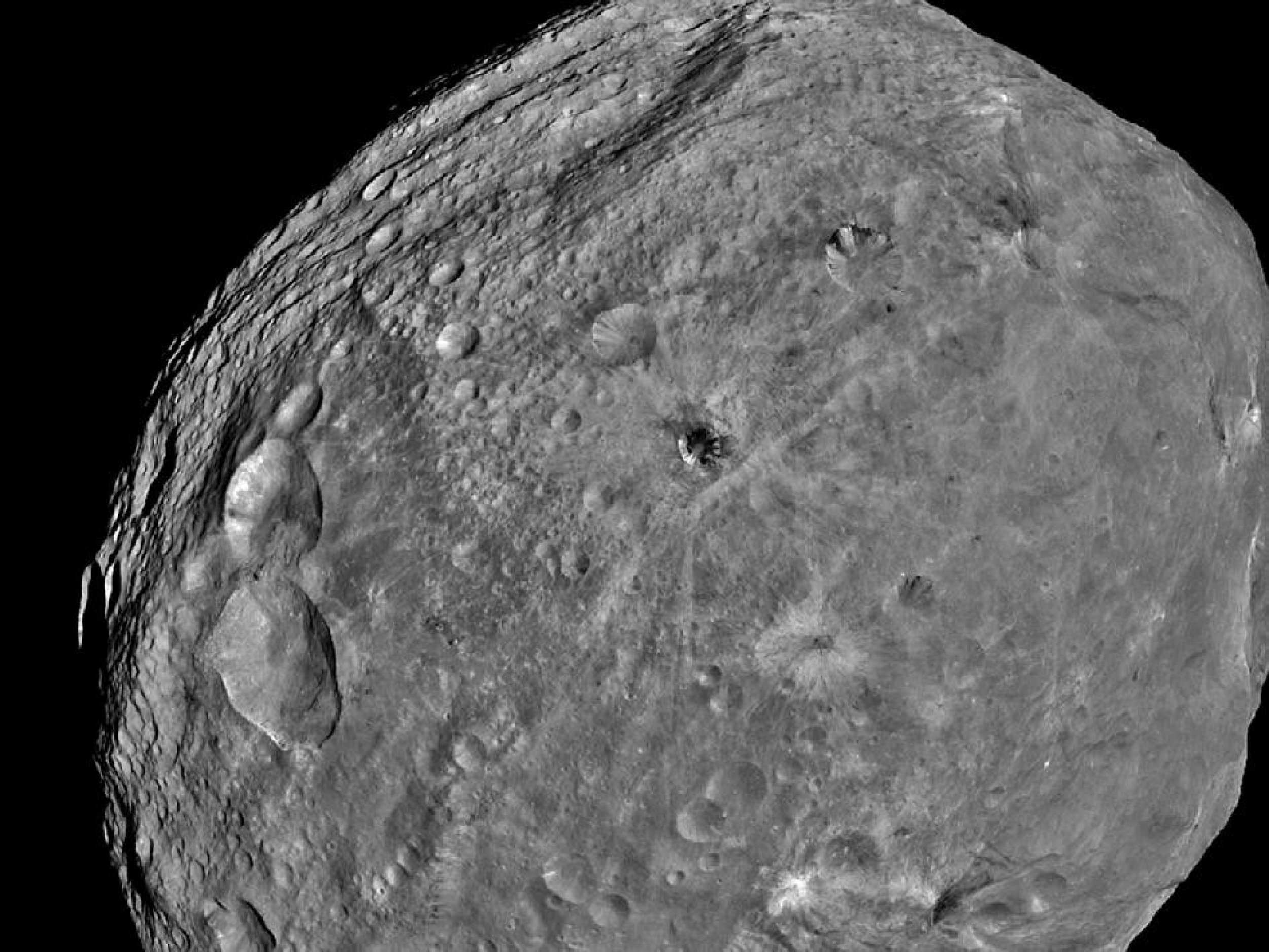Asteroid Vesta's Stunning Images Show Cosmic Snowman [PHOTOS]
The Hubble Space Telescope observed the asteroid Vesta back in 1994. At the time is was 251 million kilometers from Earth. The asteroid is the most geologically diverse (large) asteroid. Hubble telescopes have revealed evidence that the asteroid once had lava flowing on it.
NASA's Dawn spacecraft snapped photos of the image and shows the stark difference between Vesta's day and night. Dawn entered orbit around Vesta in July and has since been studying the asteroid. The spacecraft began orbiting Vesta on July 15 and will continue to do so for a year. After, Dawn will then do some asteroid hopping where it will encounter Ceres. Vesta is the brightest asteroid in our solar system and measures around 330 miles across (approximately the length of Arizona).
Like most asteroids, it Vesta lives between the belt of Mars and Jupiter.
Vesta is similar to the Earth's moon, with lava beds and debris. There is a flattened area on one end of Vesta, which was created by a giant collision billions of years ago.
According to NASA:
"During its nearly decade-long mission, the Dawn mission will study the asteroid Vesta and dwarf planet Ceres, celestial bodies believed to have accreted early in the history of the solar system. The mission will characterize the early solar system and the processes that dominated its formation.
"Vesta and the recently categorized dwarf planet Ceres have been selected because, while both speak to conditions and processes early in the formation of the solar system, they developed into two different kinds of bodies. Vesta is a dry, differentiated object with a surface that shows signs of resurfacing. It resembles the rocky bodies of the inner solar system, including Earth. Ceres, by contrast, has a primitive surface containing water-bearing minerals, and may possess a weak atmosphere. It appears to have many similarities to the large icy moons of the outer solar system.
"Ceres and Vesta are the two most massive residents of the asteroid belt. Vesta is a rocky body, while Ceres is believed to contain large quantities of ice."
Facts about Vesta:
--Discovered: March 29, 1807 by Heinrich Wilhelm Olbers of Germany (fourth asteroid discovered)
--Dimensions: About 578 by 560 by 458 kilometers (359 by 348 by 285 miles)
--Shape: Nearly spheroid, with a massive chunk out of the south pole
--Rotation: Once every 5 hours, 20 minutes
--At the asteroid's south pole is a giant crater - 460 kilometers (285 miles) across and 13 kilometers (8 miles) deep.
ALSO READ: Earth's Two Moons Collided Creating an Asymmetrical One, Theory





© Copyright IBTimes 2024. All rights reserved.





















